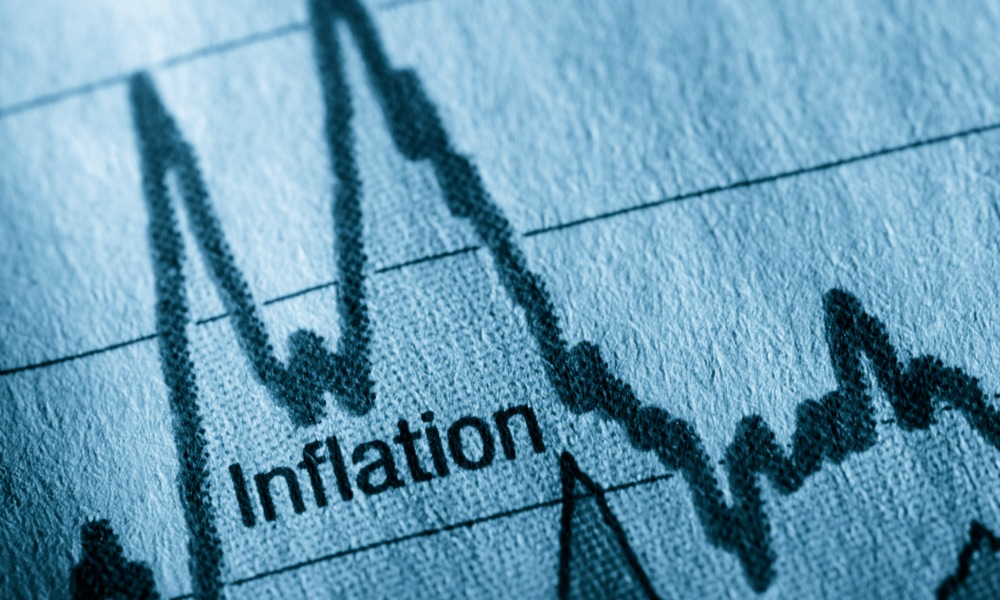Lenders struggle with how to underwrite interest rate exposure

A series of interest rate hikes by the Fed in an effort to tame inflation has left uncertainty in its wake for lenders, borrowers and investors of commercial real estate. The tactic now in play for investors is one of hedging interest rate risk in a volatile debt market.
That was the central theme of a CBRE presentation this week organized by CBRE, the nation’s largest commercial real estate services and investment firm. Panelists for the discussion were JP Conklin, founder and president of Pensford Capital and Kelli Carhart, head of CBRE’s Multifamily Capital Markets.
Conklin said this month’s interest rate hike of 25 basis points by the Fed is likely its last this year. Evidence has shown the 10 consecutive rate increases have had the desired effect of bringing down inflation, which now stands at 5% -- just three percentage points more than the desired rate.
Fed’s probably done with rate hikes
“We have probably seen the last hike and the next Fed move will probably be a rate cut,” Conklin told CBRE. “It’s basically the clarity we’ve been looking for, for the last 12-plus months once the Fed embarked on the second most aggressive tightening cycle in history. So I think we’ve seen a peak with floating rates. They’ll probably level off for some time and then the Fed will start cutting – some point later on this year, or the beginning of next year.
He provided a snapshot of the debt capital markets today: “Right now there is a general overall freeze in the tech capital markets,” Conklin said. “I think lenders are struggling with how to underwrite interest rate exposure. I think borrowers are struggling with how to underwrite a deal with so much uncertainty around this Fed tightening cycle. If you go back to November 2021, the Feds said they weren’t hiking at all and then they hiked 5% in a year. So there’s just a lot of uncertainty. I think everyone’s really just waiting for a Fed pause so that they can start dipping their toes back in the water.”
Waiting for the big thaw
For her part, Carhart expressed optimism over a possible thaw. “Interest rates have doubled from where they were a year ago, which means we have a serious cramp on transactional volume,” she said. “Not only on debt, but on investment sales transactions nationally. If you think about five plus percent rates, I think the inflection point for people to want to transact is probably right around 5%. And today we’re getting closer to that, which makes me optimistic that this freeze will maybe thaw a bit.’
Carhart explained how shorter term fixed-rate loans are the preferred option given flexibility. But first she started by describing the types of financing offered: “There are two types of financing you can pursue if you have a transaction, which is fixed-rate debt or floating rate debt,” she explained. “Most debt the last couple of years has been done via floating rate because the rates are very low and they provide a lot of flexibility. Fixed-rate debt is exactly that. It’s fixed for a period of time. In a low interest rate environment that can be advantageous, but you don’t have flexibility.”
She described the impact inflation has had on the loans front: “Well, floating rate has gotten increasingly expensive and cap costs are increasingly expensive,” she said. “So we’re seeing borrowers migrate to shorter term fixed-rate loans to get some near-term flexibility versus 10-year fixed-rate loan, which has been the predominant term with the likelihood of interest rates going down. Most people think that it’s not advantageous to lock in a 10-year loan today because most likely in two years that rate would be significantly lower. “
Conklin described how savvy investors are hedging floating rates into fixed amid the uncertain economic climate. “Number one is through a swap,” he said. “Those are not common on agency loans, but if you have a loan with a balance sheet lender, they are a common option. That’s just swapping to a fixed rate. And you’re essentially saying, ‘here’s what I am paying floating today, what does the market think that floating rate is going to average over the term of the loan, and I’m going to convert it to a fixed rate and they work great’.
“They’re a great alternative to other fixed-rate options. The more common scenario, especially with agencies, is an interest rate cap, which is just buying an insurance policy on floating rates. And so the price of that is paid upfront with cash usually at a closing. And it’s really driven by two things: the time – so three years is more expensive than one year – and the strike, or the ceiling rate. Two percent strike is much more expensive than a 5% strike.”
Want to make your inbox flourish with mortgage-focused news content? Get exclusive interviews, breaking news, industry events in your inbox, and always be the first to know by subscribing to our FREE daily newsletter.



